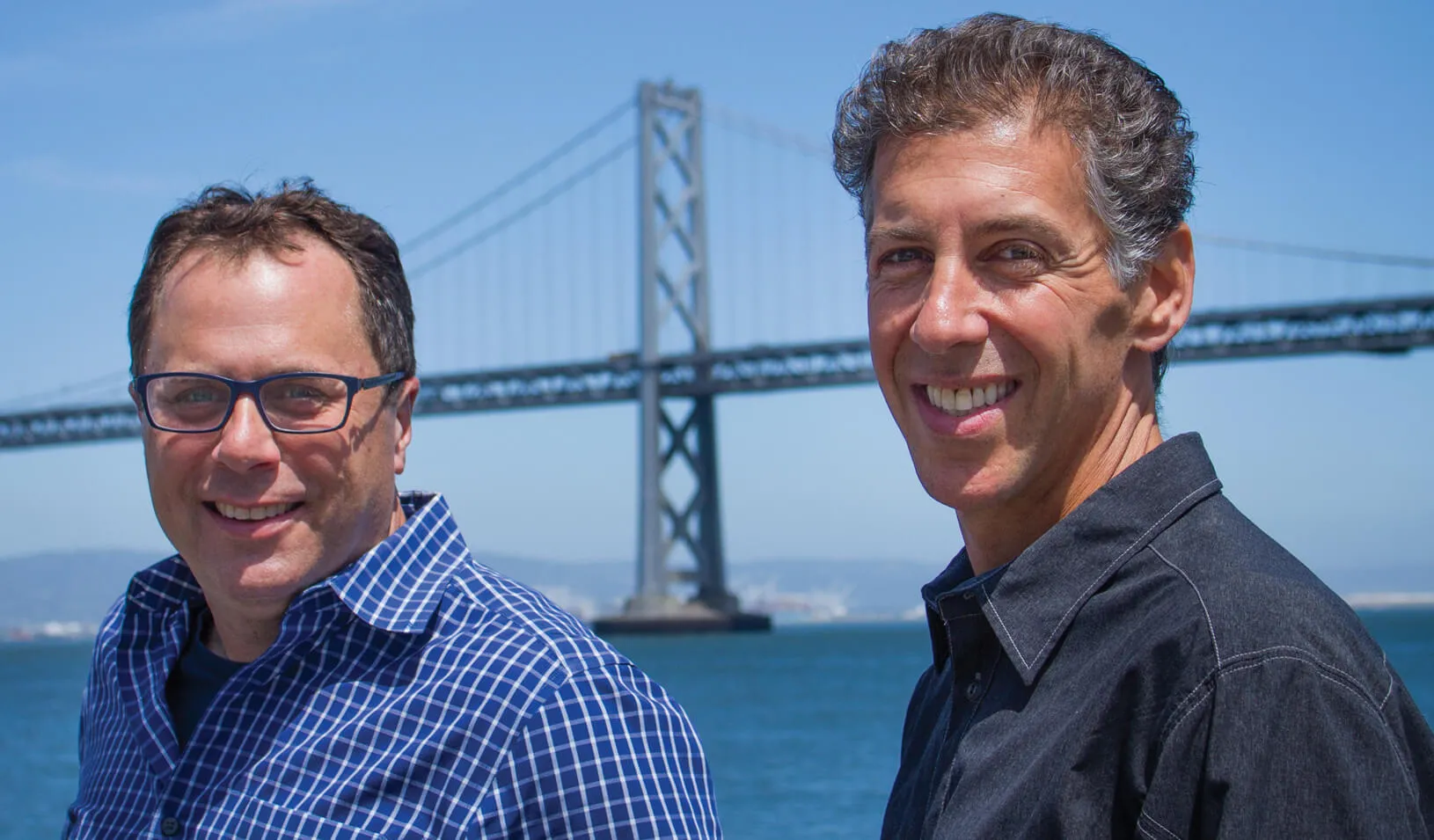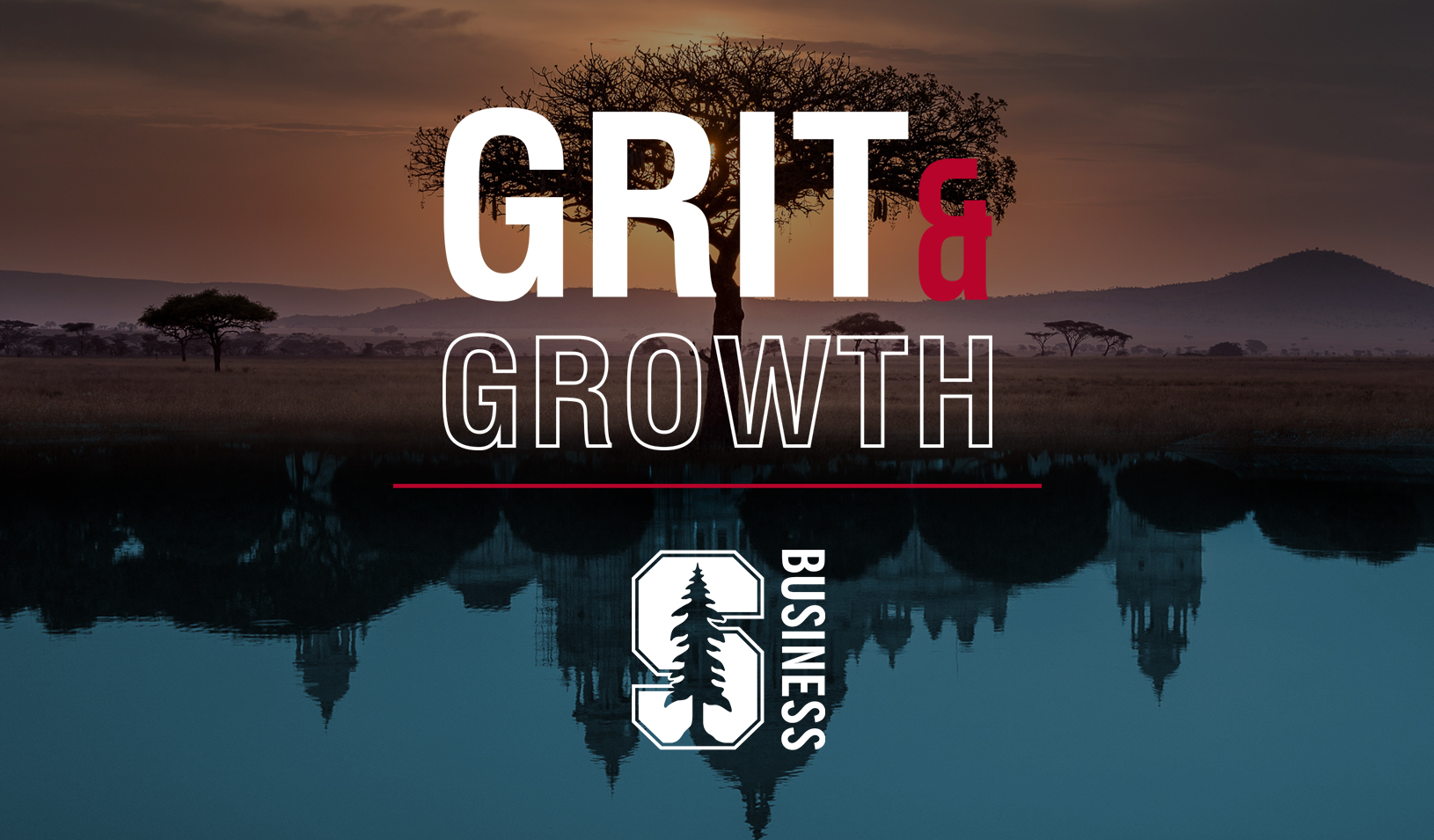Taking an Expansive View of Success
How two former schoolmates built a pair of thriving mountain resorts while helping at-risk urban kids.
October 19, 2018

Creating a program for inner-city youth while also running a for-profit enterprise has been “the thing I’m most proud of,” says Lee Zimmerman, pictured here with his business partner Brian Anderluh (left). But it hasn’t been easy. | Free Range Puppies
Lee Zimmerman left Stanford Graduate School of Business with an MBA in 1994 but no real passion for business.
“I couldn’t find anything I was excited to do in the business realm,” he recalls. “For whatever reason, it just felt hollow when I looked at business opportunities.”
But he’d been inspired by Jim Thompson, who directed the school’s innovative public management program, one of the nation’s first business school nonprofit leadership training grounds. Zimmerman decided to work with a San Francisco–based nonprofit, and the experience convinced him to find a way to blend his business education with his altruistic inclination.
In 2001, Zimmerman teamed up with his former Stanford GSB classmate Brian Anderluh (also MBA ’94) to buy the Evergreen Lodge near Yosemite National Park with the idea of creating a for-profit social enterprise company. Starting with 18 cabins, they expanded the 20-acre facility in 2004 and 2009 into a resort that now includes 90 cabins, a tavern, a recreation center, a saltwater pool, and outdoor game areas, among other amenities and services.
Their second property, Rush Creek Lodge, opened in June 2016 one mile from the national park entrance. Rush Creek offers lodge rooms, suites, and villas, and uses greywater recycling systems and solar panels to minimize its environmental impact.
Both businesses were built around a self-funded social program that employs high-potential young adults, mostly from urban San Francisco and Oakland, who work for about four months as full-time paid interns in various departments at the lodges. Those interns get job training, exposure to wilderness experiences, and assistance from program staff in planning educational and career steps to help them “build momentum in their lives and realize their fullest potential.”
In 2007, Evergreen Lodge was certified as a founding B Corporation, putting it in the same corporate category as well-known socially conscious companies such as Patagonia, Ben & Jerry’s, and Revolution Foods.
How did the partnership with Brian begin and evolve?
We actually are both from Chicago and we met at an event for people from the Midwest who were headed to the business school. We ended up becoming roommates, then roommates after business school as well, and eventually business partners. It was all Stanford GSB-driven.
Starting a business is a big leap from rooming together.
I was involved in the public management program, and Brian was more of a generalist. Neither one of us was focused on where it would lead us. I had a hospitality background before I came to business school. After undergrad, I worked for three years with a management company that ran the Grand Canyon concessions and other national park–type assets. I liked hospitality but didn’t know what I wanted to do with it. We’d both been involved in fast-growth, venture-backed companies and decided to step off of that career path and focus on finding more meaning in our work, being more hands-on, and growing something more organically.
Where do you think that impulse came from?
I went to business school because I wanted to have an impact in life and do something meaningful, but I didn’t get exposed to socially minded things until I got there. After graduation, I began working with one of the early social enterprise nonprofits, Juma Ventures, in San Francisco, which provides a combination of jobs and social service support for urban youth. Juma later wanted to expand its model, and Brian and I were excited by the idea of creating a for-profit business that could self-fund a social program. To determine what business to pursue, we looked for the intersection of what would be high-impact for young people, what we were capable of doing well, and what would be profitable.
Did your nonprofit experience offer any meaningful lessons?
I learned that if you’re running an employment program, you have to work with people who are job-ready. You can have the best of intentions, but if they have an addiction or are homeless, they can’t even think about a job yet. They have to be ready to look ahead and make plans. I also learned that you need a business that that has enough scale and enough profit margin that you can afford to absorb the costs and inefficiencies of running such a program. Knowing those things helped us make better decisions, so we didn’t blow up the system while we made early mistakes.
Then along came the chance to buy Evergreen Lodge.
Exactly. We had a friend who knew about this mom-and-pop lodge that only operated four months a year. The lodge was too small to interest the big guys and too big for smaller players, so it was kind of a sweet spot for us. We liked the idea of providing a variety of jobs for young people, and we loved the out-of-urban element so they could experience things they otherwise never would have. That truly drove the business we ended up acquiring.
You financed the Evergreen purchase with money from investors and small business loans. Was everyone on board with the idea of a social enterprise?
In initial talks with banks, we included our youth program as a line item. But that was too scary for them. It didn’t make sense and raised questions, so we hid it by burying the program expenses into a general administration line. Regarding equity investment, we eventually found a set of progressive-minded investors who were excited about getting a combination of financial and social returns. About 65% of the financing came from debt and 35% from equity.
Did your investors’ risk pay off?
We structured it to be a long-term hold — so we could continue our employment program — that would pay meaningful dividend-style returns on an annual basis, but we designed the investment so that once we had enough cash flow, we’d refinance for an amount equal to the original invested capital and return to investors their entire initial investment in a lump sum. That’s separate from the dividends we’d been giving them. Afterward, they’d retain their ownership interest in the lodge and continue to receive ongoing distributions. It was a way to recycle capital without being forced to sell the business. The plan worked, and we returned all originally invested capital in 2012, and we continue to share the cash flows with our investors every year. So investors got their money out, didn’t lose any ownership, and are able to redeploy their capital elsewhere.
Did any of them redeploy it into Rush Creek?
Virtually all did, which was a great vote of confidence in us and our model. The timing was good. When we refinanced the Evergreen and ratcheted up its debt so we could return that originally invested capital, we were about to begin financing for Rush Creek. We were able to give everyone back their initial Evergreen investment and say, “Hey, we did what we said we were going to do 10 years ago, and you’re still getting these dividends, and we’re helping a lot of young people each year, so …” It was easy for investors to get excited about Round Two. The timing was fortuitous and a bit intentional.
Over the years, has the youth program been a drag or a boon for the business?
A boon — but it’s complicated. Overall, it has been the coolest thing that we’ve done and the thing I’m most proud of. But it’s complicated because you have to have a lot of organizational buy-in to make sure managers are on board, and running a social program within a guest-focused business is difficult. But as an organization, you’re putting your money where your mouth is in terms of caring about people, and as a result, you attract and retain great people. The hidden benefit is that it’s helped us create an amazing culture at the lodge. The longevity of so many of our managers speaks to the program’s hidden benefits.
What values do you instill by exposing urban kids to the wilderness?
For me it’s not so much an Outward Bound back-to-nature thing. But most of these kids live in inner-city neighborhoods and some have never even been to the ocean, let alone visited true wilderness. We’re teaching them that life can be different from what they’ve had. That’s the most important thing we can give these guys — understanding that you do have control over how and where you live your life. Being away from the urban environment is a huge eye-opener for them. Knowing you have options and being unafraid of what’s new are great things to learn as they move into adulthood.
For media inquiries, visit the Newsroom.
Explore More

From Local Startup to Pan-African Success: The Beem Story

Short Takes: Trailblazing the Internet of Things in Bangladesh



